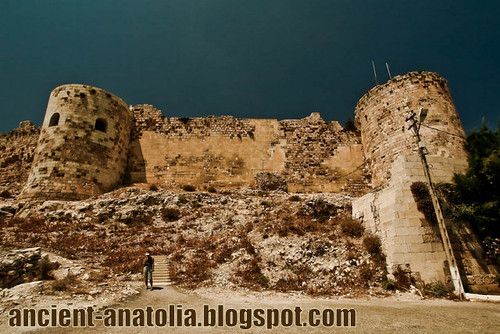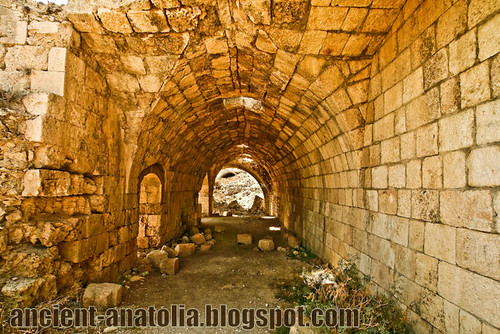
Castle of Seleucia, Silifke, Mersin, Turkey:
Located a few miles from the mouth of the Göksu River, ancient Calycadnus, Seleucia was founded by Seleucus I Nicator in the early 3rd century BCE, one of several cities he named after himself after Alexander the Great.
The city grew to include the nearby settlement of Holmi in modern day Taşucu which had been established earlier as an Ionian colony but being on the coast was vulnerable to raiders and pirates. The new city up river was safer against attacks from the Mediterranean Sea so Seleucia achieved considerable commercial prosperity as a port for this corner of Cilicia (later named Isauria), and was even a rival of Tarsus.
Cilicia thrived as a province of the Romans, and Seluecia became a religious center with a renowned 2nd century Temple of Jupiter. It was also the site of a noted school of philosophy and literature, the birthplace of peripatetics Athenaeus and Xenarchus. The stone bridge was built by the governor L.Octavius Memor in 77 AD. Around 300 AD Isauria was established as an independent state with Seleucia as the capital.
